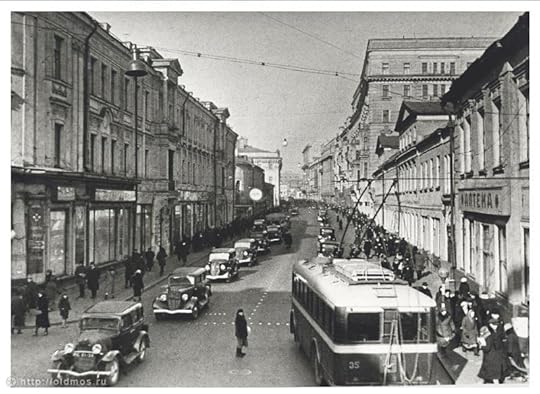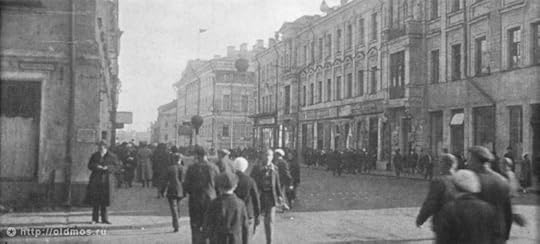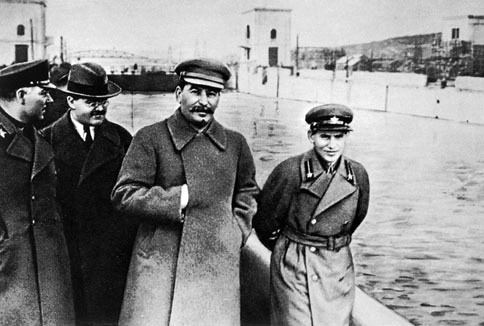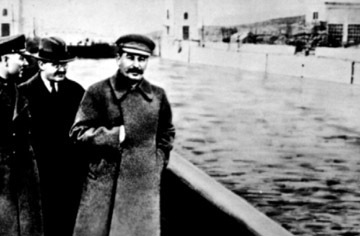B.V. Lawson's Blog, page 252
February 5, 2012
Media Murder for Monday
 MOVIES
MOVIES
Best Actress nominee Rooney Mara, star of David Fincher's The Girl With the Dragon Tattoo, is replacing Blake Lively as the star of Steven Soderbergh's thriller Side Effects. She'll play Emily Hawkins, an unstable young woman addicted to prescription drugs who's trying to cope with her husband's recent release from prisonn.
Brian Henson (Jim Henson's son) is set to direct The Happytime Murders, described as "film noir puppet comedy" where the puppet cast of an '80s children's TV show are murdered one by one until a disgraced LAPD detective-turned-private eye puppet takes on the case. The Hollywood Reporter notes that actress Katherine Heigl is in talks to co-star.
The crime thriller One Shot, based on the Lee Child novel and starring Tom Cruise, is experiencing a little legal speed bump; two producers are being sued by another who claims he worked for years on the project but was denied credit and future profits.
TV
ABC's crime drama Castle will air its much-anticipated noir episode "The Blue Butterfly" tonight, in which a Castle fantasy has the title character (Nathan Fillion) playing a hotshot private eye deep in a mystery that lures him to a beautiful femme fatale (Stana Katic), who turns out to be key in the investigation.
Lifetime is developing Columbine, a miniseries based on the tragic events of the deadly 1999 school shootings as told in the 2009 bestselling book by Dave Cullen. Writer-director Tommy O'Haver (American Crime) optioned the rights to the book and will write and direct the project.
Dawson's Creek creator Kevin Williamson is developing a show for Fox about the relationship between a serial killer and the FBI agent who took him down. Rumors have it that Kevin Bacon will soon sign to play the good guy.
Robert DeNiro's show NYC 22 has received a premiere date of April 15 at 10pm EST on CBS. The series follow a group of rookie cops learning the ropes at the New York Police Department.
Andrew Davies is adapting crime novels for the BBC written by John Banville (under the pen name of Benjamin Black), featuring Quirke, an alcoholic pathologist with a complicated private life in 1950s Dublin. Gabriel Byrne has signed on to play the lead.
Andre Braugher is joining the cast of the pilot Last Resort by Shawn Ryan (executive producer for The Shield). The drama is described as "a thriller that's set in the near future and follows the crew of a U.S. submarine that refuses an order to fire their missiles and ends up being hunted. They take shelter on a NATO listening outpost on the island of Sainte Marina and declare themselves an independent nation (with lots of nukes)."
Actor Bobby Cannavale has joined the HBO gangster drama Boardwalk Empire as a series regular in the role of Gyp Rosetti, described as "a charming but ruthless gangster who challenges Nucky (Steve Buscemi)."
FX renewed Sons of Anarchy for two additional seasons, which came as no surprise considering it's the networks' top-rated show. The series was created by Kurt Sutter (writer/producer of The Shield), and centers on a sheltered community watched over by a renegade motorcycle club intent on protecting the town from the newcomers that threaten it.
THEATER
The Coach House Theater in Akron, Ohio, is staging Agatha Christie's And Then There Were None, with a run through February 19. The theater is well-known for its productions of Christie plays.





The Comedy is Finished
Charles Ardai, Editor of Hard Case Crime, is readying a lost novel written by the late Donald Westlake for release in February. It almost didn't see the light of day. Westlake wrote the book in the 1970s and sent a copy to fellow crime fiction author Max Allan Collins, but ultimately decided not to publish the work since he was afraid it would be confused with Martin Scorsese's movie from the era, The King of Comedy. Fast forward three decades later when Collins brings the book to the attention of Ardai, who knows a good thing when he sees one. Now readers everywhere will be able to enjoy what is likely the final work by the celebrated and talented Westlake.
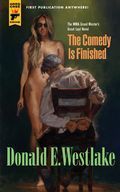 Titled The Comedy is Finished, the novel centers on a group of people seeking to rekindle the passion of the social upheaval of the 1960s by kidnapping comedian Koo Davis, known for his longstanding USO tours during WWII, Korea, and Vietnam in support of the troops. The plot seems to be working well at first, but everything starts to fall apart for everyone involved: the kidnappers, the bewildered victim and the FBI agent leading the investigation, who hopes for redemption following Watergate-related career missteps.
Titled The Comedy is Finished, the novel centers on a group of people seeking to rekindle the passion of the social upheaval of the 1960s by kidnapping comedian Koo Davis, known for his longstanding USO tours during WWII, Korea, and Vietnam in support of the troops. The plot seems to be working well at first, but everything starts to fall apart for everyone involved: the kidnappers, the bewildered victim and the FBI agent leading the investigation, who hopes for redemption following Watergate-related career missteps.
Publishers Weekly praised Westlake's skill and versatility as a writer, as well as his sharply written and insightful prose, praise that could be heaped on many of the author's over 100 novels, collections and screenplays (penned under a dozen different names). He's probably best known for his series featuring the funny and unlucky master criminal John Dortmunder and also another, hard-boiled series with professional criminal Parker (written under the pen name of Richard Stark). However, several of his stand-alone caper novels like The Comedy is Finished are also masterful little gems.
Vince Keenan wrote a great review of the book that you can read on his blog, which also links to a story from Max Allan Collins about how the book came to be. Also, as a side note, Patti Abbott is going to be featuring Donald Westlake novels on her "Friday's 'Forgotten' Books" feature on February 17th to coincide with the release of The Comedy is Finished.





February 2, 2012
Friday's "Forgotten" Books - The Laughing Policeman
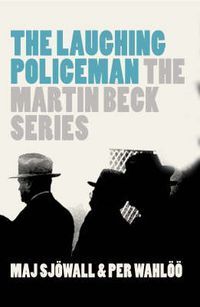 Before Stieg Larsson, before Jo Nesbø or Henning Mankell, Scandinavian crime fiction was dominated by Maj Sjöwall and Per Wahlöö, journalists and common-law married writing partners from Sweden. In the 1960s, the couple set about to write 10 books in 10 years, each 30 chapters long, which they plotted and researched together, then wrote alternate chapters. Because they intended the books as a critique of capitalist society, all the books in their original editions were given the subtitle "Report of a Crime" as a politically double-entendre phrase.
Before Stieg Larsson, before Jo Nesbø or Henning Mankell, Scandinavian crime fiction was dominated by Maj Sjöwall and Per Wahlöö, journalists and common-law married writing partners from Sweden. In the 1960s, the couple set about to write 10 books in 10 years, each 30 chapters long, which they plotted and researched together, then wrote alternate chapters. Because they intended the books as a critique of capitalist society, all the books in their original editions were given the subtitle "Report of a Crime" as a politically double-entendre phrase.
According to Wahlöö, their intention was to "use the crime novel as a scalpel cutting open the belly of the ideological pauperized and morally debatable so-called welfare state of the bourgeois type." The books (all of which have been adapted for film or TV), follow the exploits of detectives from the special homicide commission of the national police, centered around the character of Superintendent Martin Beck of the Homicide Squad. About their main policeman, Ms. Sjöwall said, "We wanted a credible, trustworthy Swedish civil servant with empathy and real concern." The books really should be read in sequential order because the characters of Beck, his family, and Beck's police colleagues change throughout the series.
However, I chose The Laughing Policeman for today's FFB, as it was the only one in the series to win an Edgar award from the Mystery Writers of America for Best Novel, an honor bestowed in 1971. At the beginning of the book, police are off fighting peaceful Vietnam demonstrators and casually molest a girl demonstrator on her thirteenth birthday. Soon afterward, nine bus riders are gunned down by an unknown assassin on a cold and rainy Stockholm night. Unfortunately for Beck, the two inept patrolmen who stumbled upon the crime scene destroyed much of any useful evidence. The frenzied press, fishing for an explanation for the seemingly random crime, quickly dubs the killer a madman.
With his usual dogged determination, Beck suspects the culprit isn't a madman, after all, upon discovering the apparently motiveless killer has managed to target one of Beck′s best detectives, Ake Stenstrom. But far too many question remain: why was Stenstrom on that particular bus that night? Why was he sitting next to a young, female nurse? After Beck works with the murdered detective's girlfriend, he's able to piece together his activites right before his murder. Soon enough it becomes clear that Stenstrom was working off the books, and that the attack may be connected to an unsolved cold case.
The Beck novels are filled with brooding, multi-dimensional characters and the settings are equally gritty and dour, pointing out the dark underbelly of Swedish culture and clearly foreshadowing Larsson. There are also other parallels: Sjöwall/Wahlöö and Larsson wrote against the sub-class treatment of women in society, as well as the failings of the capitalistic system to protect its most vulnerable citizens.
Tragically, like Larsson, who died at age 50 of a heart attack, Wahlöö had an untimely death in 1975 from cancer at the age of 48. Also, since Sjöwall and Wahlöö never married and he never legally adopted her daughter, she hasn't earned any royalties from the books, in the same way Larsson's common-law partner of 30 years, Eva Gabrielsson, has been shut out of any money from Larsson's estate.





You Must Remember This
This weekend, the National Museum of American History at the Smithsonian is dedicating its new Warner Bros. Theater. The studio donated $5 million to renovate the museum's old Carmichael Auditorium into a modern theater with 3D-projection capability. According to museum spokeswoman Melinda Machado, the new theater gives the Smithsonian its first space dedicated to film history, and it will show everything from silent films to first-run movies. The museum is also in early talks with the American Film Institute to develop a daily film screening.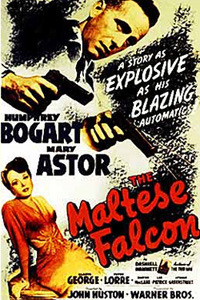 The dedication festivities start off with a Humphrey Bogart festival, with Friday night's showing of Casablanca and a Q&A following with Stephen Bogart, son of Humphrey Bogart and Lauren Bacall. Saturday features the classic adaptation of Dashiell Hammett's novel, The Maltese Falcon, with NPR film commentator Murray Horwitz leading a pre-screening discussion highlighting historical tidbits and things to look and listen for in this classic Hollywood movie. On Sunday, the three-day affair winds down with The Big Sleep, the Howard Hawks directed film version of Raymond Chandler's first novel.
The dedication festivities start off with a Humphrey Bogart festival, with Friday night's showing of Casablanca and a Q&A following with Stephen Bogart, son of Humphrey Bogart and Lauren Bacall. Saturday features the classic adaptation of Dashiell Hammett's novel, The Maltese Falcon, with NPR film commentator Murray Horwitz leading a pre-screening discussion highlighting historical tidbits and things to look and listen for in this classic Hollywood movie. On Sunday, the three-day affair winds down with The Big Sleep, the Howard Hawks directed film version of Raymond Chandler's first novel.
Along with the grand opening of the Warner Bros. Theater, the museum will have a display showcasing 20 feet of Hollywood memorabilia, including costumes worn by Humphrey Bogart, Lauren Bacall and Clint Eastwood along with Harry Potter's robe. Visitors will also see objects representing Warner Bros. Studio history such as Jack Warner's silver telephone and Bugs Bunny animation drawings.





January 31, 2012
Author R&R with William Ryan
I'm starting a new feature on the blog this year, something I call "Author R&R" -- Author Reference and Research. The goal is to to learn how authors go about researching and preparing for their novels, be it through job shadowing, being buried in library stacks, going online, interviews, news reports, whatever techniques and methods they use in getting the details just right. Or whether they feel too much research and over-planning can be deadly to a manuscript. My first guest is Irish writer William Ryan, whose first novel, The Holy Thief, was shortlisted for the Theakstons Crime Novel of the Year, the Kerry Group Irish Fiction Award, CWA John Creasy New Blood Dagger and a Barry Award. That novel and its sequel, the recently-released The Darkening Field (its US title), feature Captain Alexei Korolev of the Criminal Investigation Division of the Moscow Militia around the time of Stalin's Great Terror in the 1930s.
My first guest is Irish writer William Ryan, whose first novel, The Holy Thief, was shortlisted for the Theakstons Crime Novel of the Year, the Kerry Group Irish Fiction Award, CWA John Creasy New Blood Dagger and a Barry Award. That novel and its sequel, the recently-released The Darkening Field (its US title), feature Captain Alexei Korolev of the Criminal Investigation Division of the Moscow Militia around the time of Stalin's Great Terror in the 1930s.
Here's what Bill had to say about the research that went into those books:
"The Korolev novels are set in 1930s Moscow - at a time when Stalin's purges are in full swing and the Soviet Union is doing its level best to completely control its image, both at home and abroad. Secrecy was an obsession, propaganda was all-pervasive and anyone who was writing, filming or photographing anything whatsoever was careful to make sure they did nothing to disturb the myth that the Soviet Union was a happy and prosperous country, looked over by a paternal Stalin and the envy of the rest of the world. So if nothing was quite as it seemed, how does a writer who didn't experience those years find out what it was really like on a day to day basis?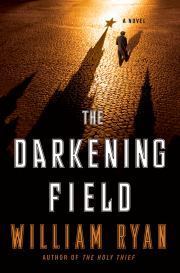 Well, I started off by reading pretty much anything that was remotely relevant. I've ploughed my way through Stalinist propaganda, taken my hat off to novels written in secret by persecuted authors, been tempted by strange advertisements for Soviet sausage, waded up to my neck in adulatory biographies of Soviet heroes and felt sick at the lies told by foreign travellers to their readers at home. I'm also lucky that there are some brilliant historians writing about the Stalinist period at the moment - Sheila Fitzpatrick, Orlando Figes, Simon Sebag Montefiore, Catherine Merridale and Anne Applebaum, to name but a few - and many of them have accessed material from archives and places I could never hope to come across otherwise. I'm not sure everything I read was directly useful (or enjoyable - I doubt I'll be reading Red Pilot again) but the cumulative result was invaluable when it came to creating the background and atmosphere for the story - and also understanding how propaganda worked in the Soviet Union and what smells right and what smells wrong.
Well, I started off by reading pretty much anything that was remotely relevant. I've ploughed my way through Stalinist propaganda, taken my hat off to novels written in secret by persecuted authors, been tempted by strange advertisements for Soviet sausage, waded up to my neck in adulatory biographies of Soviet heroes and felt sick at the lies told by foreign travellers to their readers at home. I'm also lucky that there are some brilliant historians writing about the Stalinist period at the moment - Sheila Fitzpatrick, Orlando Figes, Simon Sebag Montefiore, Catherine Merridale and Anne Applebaum, to name but a few - and many of them have accessed material from archives and places I could never hope to come across otherwise. I'm not sure everything I read was directly useful (or enjoyable - I doubt I'll be reading Red Pilot again) but the cumulative result was invaluable when it came to creating the background and atmosphere for the story - and also understanding how propaganda worked in the Soviet Union and what smells right and what smells wrong.
The other tricky job that had to be done was to try and reconstruct what Moscow actually looked like at the time, what the streets were called and what was where. I visit Russia before each book so I can go to the particular places I'm planning to use but, because Moscow has changed so much in the intervening seventy five years, I need to do a lot more than that. It can be even be difficult just to find out what a street was called in 1936 because street maps extending past the centre of Moscow just weren't published up until the eighties because the Soviet Union still feared invasion. It was such an issue for foreigners that in the seventies the CIA made their own map of Moscow for US embassy staff who were tired of getting lost in the Moscow outskirts. In most cities this secrecy about its own geography wouldn't be such a problem for a writer - Fifth Avenue has been Fifth Avenue for well over a hundred years, after all - but in Moscow many streets are now no longer called after the revolutionary heroes they once were. Fortunately one item in my ever-growing research library is a 1937 Moscow guidebook which helps a great deal (it also includes the very odd sausage advertisements) in addition to which www.oldmos.ru has a huge stash of photographs of Moscow from the 1860s onwards catalogued on a modern map. Even so, some locations just weren't photographed - the Lubianka, the headquarters of the Soviet secret police, has changed considerably in appearance over the years but, perhaps unsurprisingly, it took me some time to find a photograph of it that someone was brave enough to take during the 1930s.
Even when I do find a photograph of a location I have to be a bit careful as the same place can look quite different depending on the purpose of the photograph. For example, here are two photographs of Tverskaya, a street that has been altered out of all recognition since 1936 (including its name - back then it was called Gorky). The photographs are taken from locations about a hundred yards apart but of the same section of street. In one everything looks prosperous and bustling - in the other not at all. The first picture was almost certainly taken by a professional photographer and intended to show an idealised view of what a modern city Moscow had become - whereas the second was more likely to have been for personal use and shows a very different version of the same street.
An even better example of how Soviet photographs can twist reality is shown in a photograph of Stalin and his politburo colleagues surveying a recently built canal. The original photograph was taken a few months before the arrest and subsequent execution of the former head of the NKVD, Nikolai Ezhov. In the first photograph Ezhov is the small man on Stalin's right looking understandably nervous and in the second he's completely disappeared. Or has he? If you look carefully you can see his ghostly shape on the water - a fitting end for a man who caused millions to disappear in the purges he orchestrated for Stalin.
The dilemma for every novelist is how much research to put onto the page and I think the less the better. After all, Arthur Conan Doyle wrote the Sherlock Holmes stories over a hundred years ago and they're as readable today as they ever were. Conan Doyle didn't explain every little detail of Victorian life because he didn't have to and, as modern readers, we're still able to work out what's going on and why. Sometimes details do have to be fleshed out a bit but I try to do it as briefly as possible. It might sound like research is a waste of time if I don't use it that much in the books but it doesn't work that way, or at least I don't think it does. All the background information a writer has helps them to tell the story with confidence and to avoid those little mistakes that readers pick up on and which spoil the flow of the novel for them. It's that easy flow and confidence that I want from a writer when I'm reading their book - someone who knows where we're going and why we're going there."
You can download the first two chapters of The Darkening field via this link.
My thanks to Bill for giving us some background on his research process and novels! Next week: Betty Webb, author of a series with western P.I. Lena Jones and Pima Indian partner Jimmy Sisiwan.





January 29, 2012
Media Murder for Monday
Omnimystery reports that John Lee Hancock (Midnight in the Garden of Good and Evil, The Blind Side) will direct his own adaptation of John Grisham's 1997 legal thriller The Partner for New Regency. This is the author's eighth book to make it to the big screen.
Guy Ritchie has reportedly signed on to direct a third Sherlock Holmes movie, again starring Robert Downey Jr. and Jude Law, although Ritchie says he wants to base the next installment in Hollywood.
TV
Pilot Season continues: NBC has ordered the pilot Chicago Fire, a fire-department action drama co-written by crime novelists Derek Haas (the "Silver Bear" thrillers) and Michael Brandt, who have together written a number film and television screenplays including 3:10 to Yuma, Wanted and The Double.
CBS has ordered Golden Boy, about one cop's rise from officer to detective to Police Commissioner, to be written and produced by Nicholas Wootton (NYPD Blue, Law & Order, Prison Break).
Also from CBS comes Quean, a drama pilot centering on an edgy, punk-rock girl who uses her hacker skills to help an Oakland-based detective solve crimes. Sound familiar? The first, but possibly not the last, show to try and copy The Girl with the Dragoon Tattoo's success.
CBS picked up an untitled 1960s-era project about famed rodeo cowboy turned Las Vegas sheriff Ralph Lamb (to be executive-produced and written by Nicholas Pileggi and Greg Walker).
Applebaum is a potential CBS drama about a former public defender who avoids the mommy blues by becoming a private investigator. The pilot is based on the Mommy Track Mysteries book series by Ayelet Waldman, and will be directed and executive-produced by filmmaker Christopher Columbus.
CSI veteran Carol Mendelsohn has received a pilot order from CBS for Widow Detective, a police detective who has seen three different partners killed in the line of duty and becomes involved in the families they have left behind.
PODCASTS/RADIO
Author Walter Mosley spoke with NPR's Talk of the Nation about his latest novel, All I Did Was Shoot My Man, the third featuring private investigator Leonid McGill. Mosley also announced he's writing another Easy Rawlins, Little Green, to be published in 2013.
NPR's "Fresh Air" program featured host Terry Gross chatting with Paul Barrett, the author of Glock: The Rise of America's Gun. Barrett says, "Police departments were amazed when they took their officers out to the range and found out not only could they learn to use the Glock pretty quickly, but the Glock also made them more accurate as marksmen."
THEATER
Former American Idol contender Constantine Maroulis has signed on to play the dual title roles in the Broadway revival of Jekyll & Hyde, scheduled to open in New York in spring 2013 after a 25-week national tour that starts October 2 of this year in San Diego.
The Repertory Theatre of St. Louis is staging A Steady Rain, by playwright Keith Huff. The play is about two beat cops who both aspire to make detective but are running up against a quota system and their own failure to follow police procedures.
The Washington Stage Theatre in LaPorte, Indiana has adapted Sleeping with Anemone, by author Kate Collins, who writes the "Flower Shop Mysteries." The troupe is small, but kudos to them for performing four original works each year.





January 28, 2012
Night of a Million Books

Are you familiar with World Book Night? Despite its name, it began in only the UK and Ireland last year, when volunteers—armed with 25 specially-printed book titles from Jane Austen and Charles Dickens to Iain M. Banks and Cormac McCarthy—fanned out across the region and gave away one million free copies. The event included what was billed as "the biggest single literary event in the world ever, " with readings and performances at London's Trafalgar Square.
The celebration was so successful, it spawned a second year in the UK in 2012 and events in Germany and the U.S. You can help with the U.S. World Book giveaway by signing up to be a volunteer by February 1st, and then, if you're chosen, giving away 20 books to people in your community on April 23. The organizers need 50,000 volunteers and only require that you be a U.S. citizen, at least 16 years old and are able to articulate where, to whom and why you want to give books away.
There were some critics of the endeavor last year, concerned the freebies would damage commercial book sales. However, the goal is not to preach to the converted, as it were, but to find non-readers or light readers and help spread a passion for reading to others in your city. As the U.S. World Book Night site states, most of the "publishing, bookstore, library, author, printing, and paper community is behind this effort with donated services and time."
If you'd like to know which books were selected for the U.S. giveaway, check out the list. For more information on registering as a volunteer, the World Book Night site has details.






